Spathiphyllum – or, as it’s commonly known, the Peace lily – is a beautiful houseplant with dark glossy leaves. It forms a lush feature plant in any corner, even in places of fairly low light.
Some think the flowers are the white waxy parts of the plant, but these are actually modified leaves called a spathe that shield the real flower – the spadix.
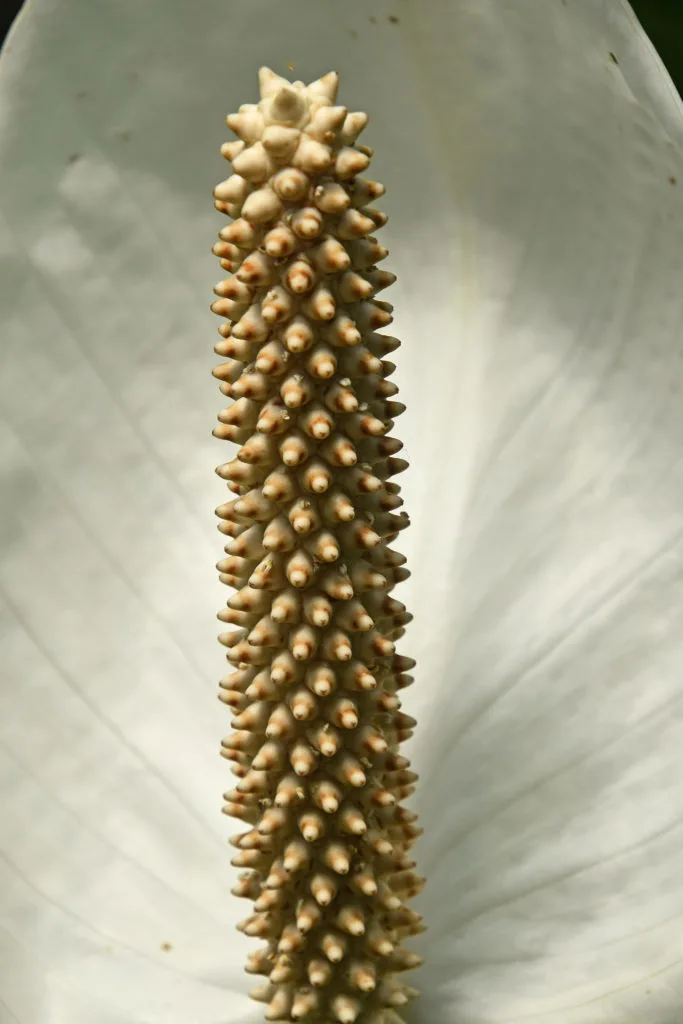
Peace lilies are part of a group called lilies, like daylilies or waterlilies, that are actually not true lilies. Those from the true lily family are called Liliums and have different flowers.
The Peace lily has flowers similar to those in the Arum family (Araceae). That’s why the flowers look similar to other members of the Arum family, such as Anthuriums.
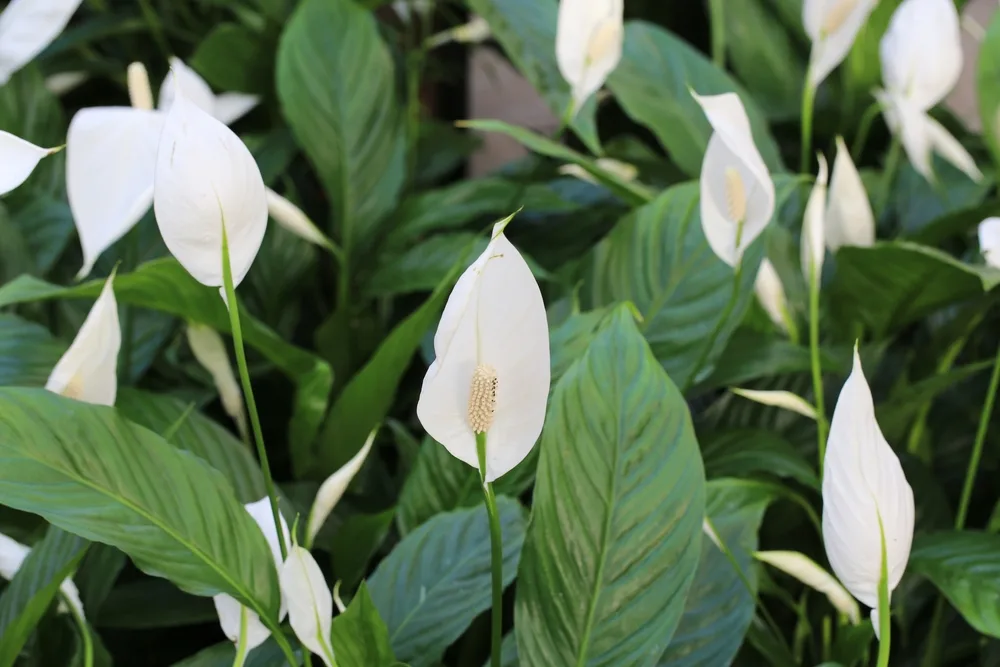
The pure white contrasting flowers are what makes the Peace lily special, so it’s hard not to want as many of them as possible.
Luckily, there are many ways to encourage your Peace lily to flower consistently, year after year.
First, let’s look at the stages of a peace lily flower
Peace Lily Flower Stages
If you’ve got a lush green leaved peace lily but no flowers, go and take a closer look. Here’s my peace lily currently.
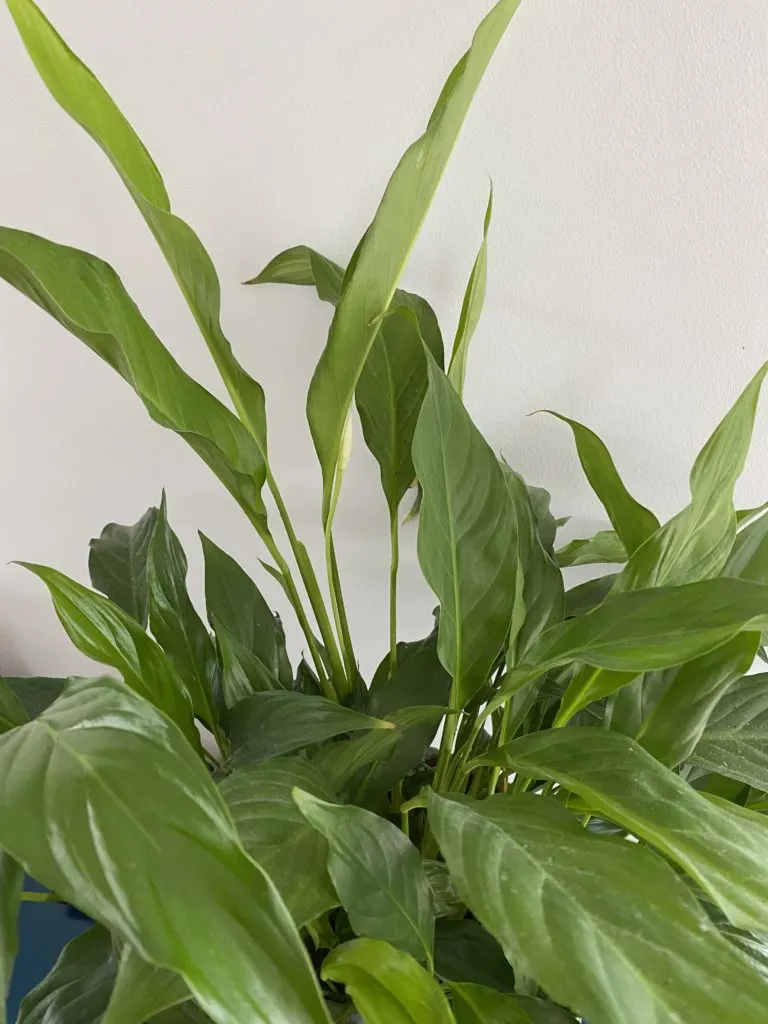
No flowers, right?
Not quite.
If you look really closely, you can see the beginnings of a brand new peace lily flower. Here’s a closer look.
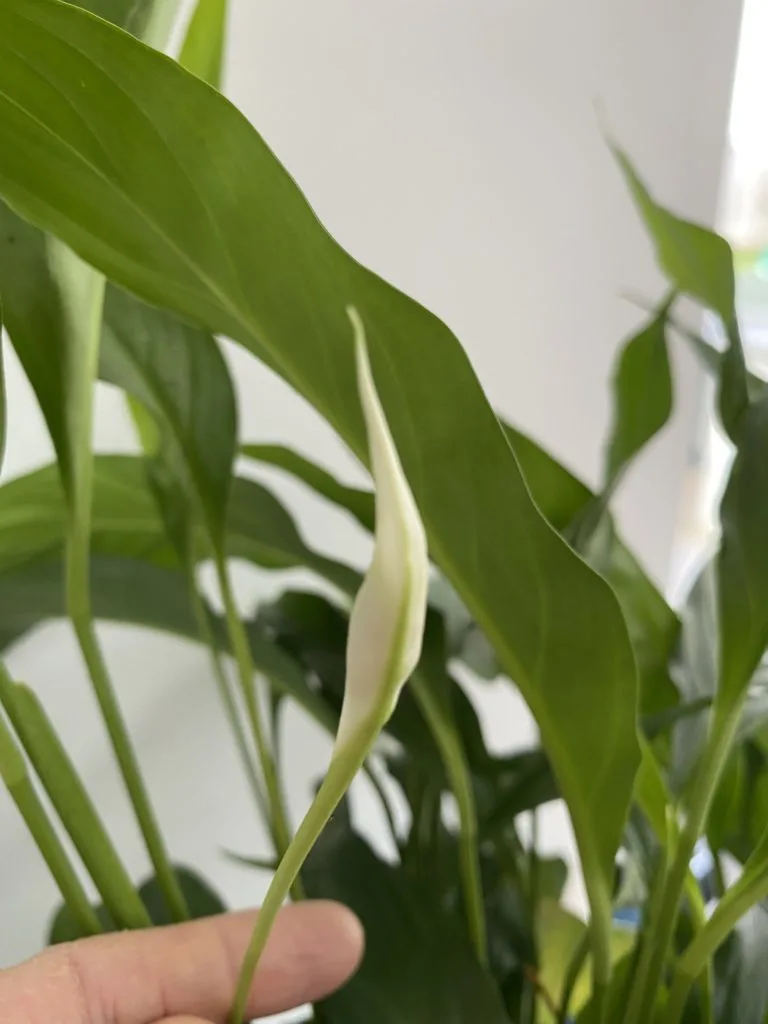
Peace lily “flowers” emerge on a stem just like the leaves. They start small with the spathe tightly wrapped around the spadix hidden amongst the rest of the peace lily leaves.
Eventually the flower stem will go on a growth spurt and emerge above the canopy with the spathe slowly opening to the familiar shape we all know and exposing the spadix within.

Your peace lily flower can last for up to a month and then will turn yellow or green before eventually turning brown or black. Deadhead your peace lily flower at any stage to preserve the beauty of your plant.
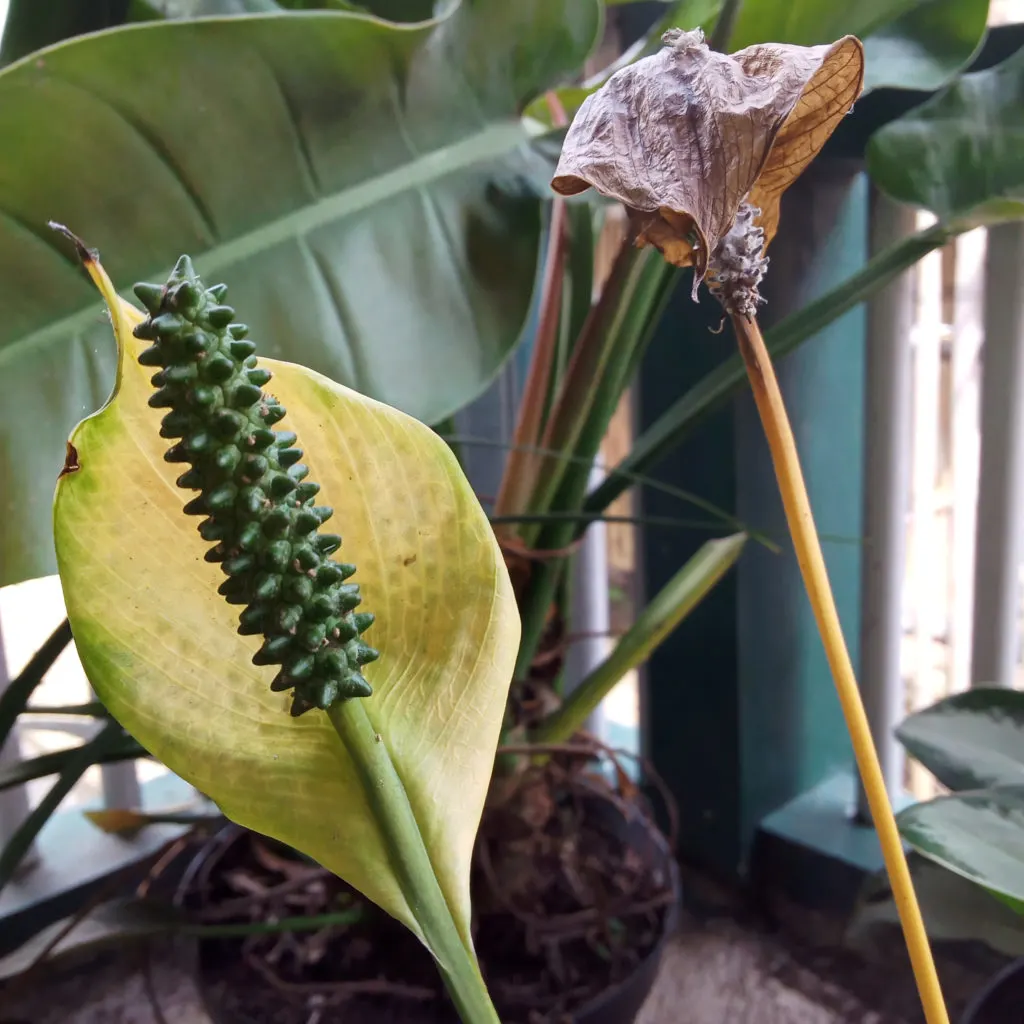
What You Need To Get Your Peace Lily To Flower
The Best Growing Medium
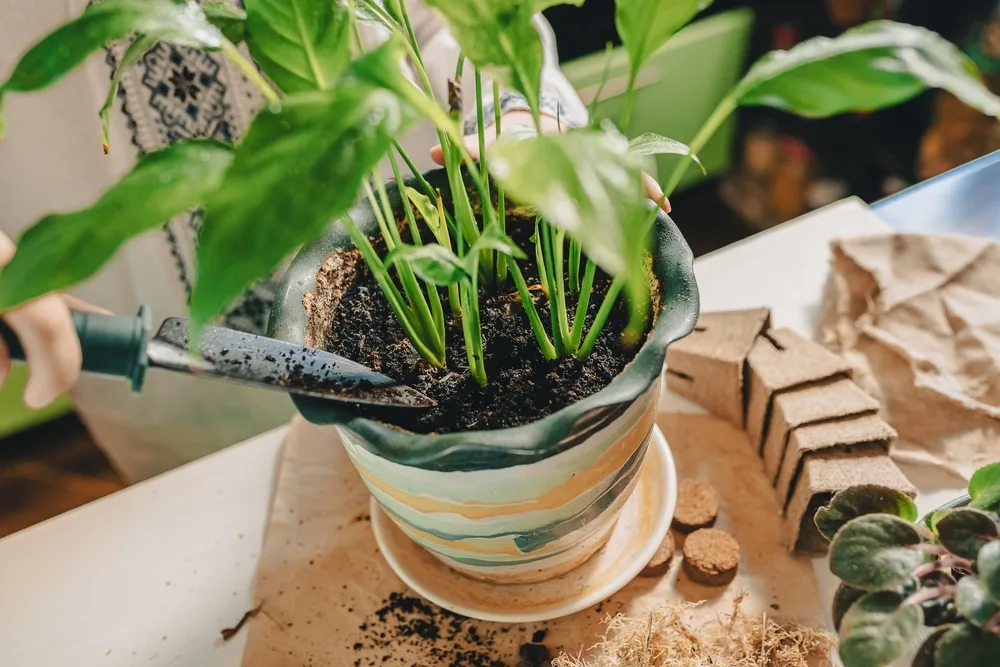
Peace lilies, like other houseplants, need well-draining soil that is light and airy to thrive. While they do prefer moist soil, it should never stay waterlogged in order to prevent root rot.
Most houseplant soil mixes will be suitable for your Peace lily, but you can also make your own by combining two parts potting soil, one part perlite and one part coconut coir. For peace lilies in sunnier spots, add one part compost or water-retaining crystals to the mixture.
While you’re assessing the soil, take a look at the pot too. Peace lilies do like being somewhat compressed into their containers, but if you see roots growing from the drainage holes, it’s best to repot.
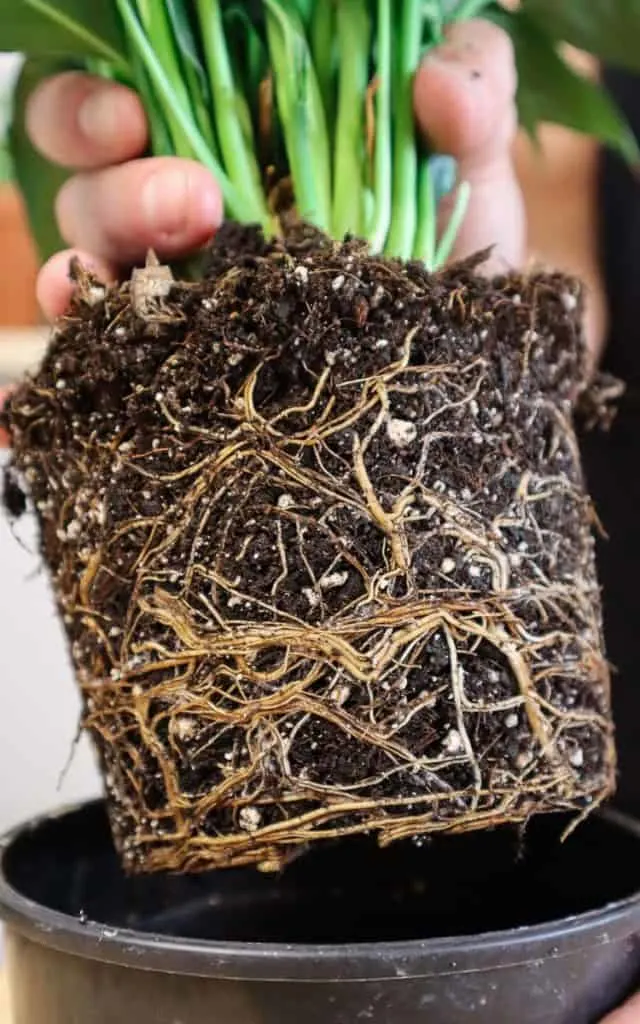
Rootbound plants struggle to draw up moisture and nutrients, resulting in stress and stunting growth. This lowers your chances of flowering and can cause a range of other health issues.
Repotting Peace lilies is best done in spring once every year or two, depending on the size of the plant.
Here’s my guide to when and how to repot your peace lily.
Warmth
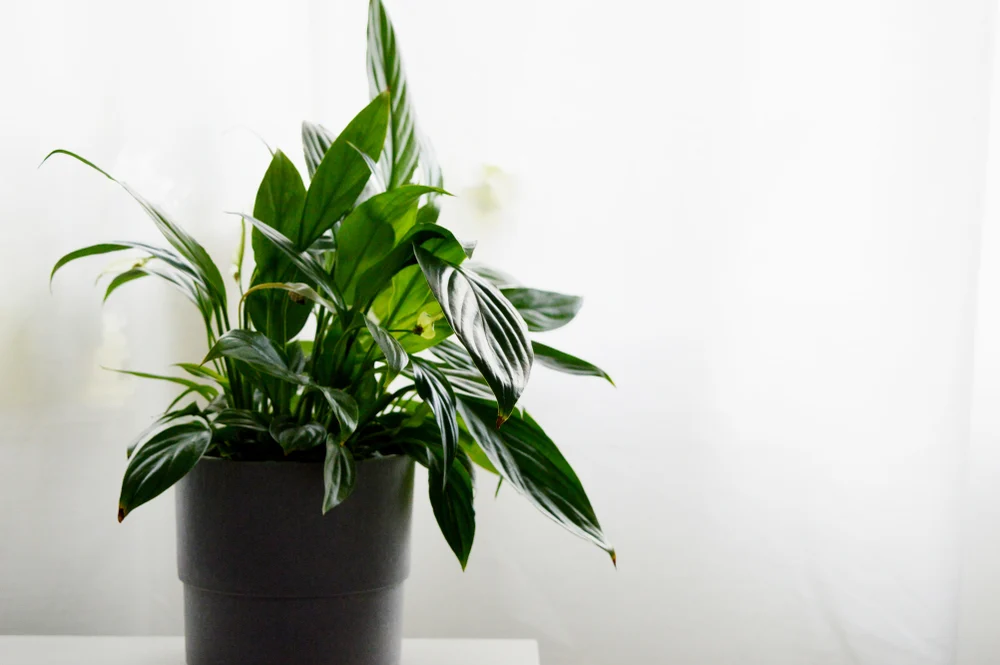
In their natural habitat, the peace lily grows under trees in dense forests in the tropical areas of the Americas. This warm climate is ideal for the plants to bloom.
Your home conditions need to mimic this tropical climate to encourage flowering. Temperatures should remain between at least 65 to 85°F – the warmer the better for blooming. High humidity will also replicate the tropical conditions these plants are fond of.
They do not do well in drafts, so keep them away from cold air or air conditioners.
Light
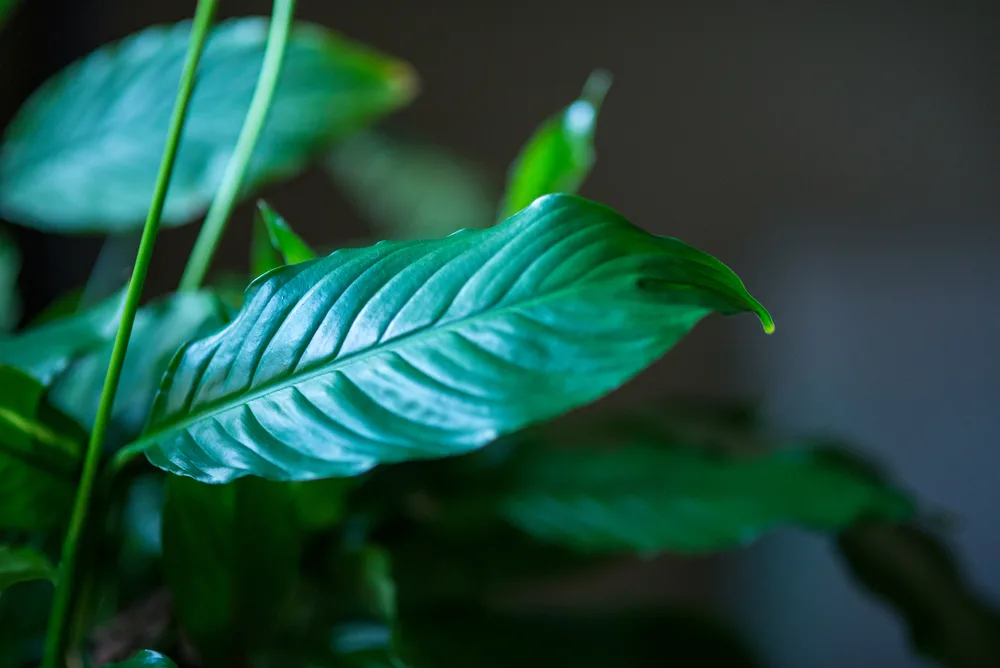
In their natural habitat, Peace lilies receive dappled light, shaded by forest trees. Replicating these conditions indoors will encourage your peace lily to bloom.
Keep them out of direct sunlight in a bright to moderate light area. If the light is too low and your lily is not flowering, move it to a brighter area. On the other hand, excessively bright light can also trigger photosynthesis in the spathes and make them green rather than pure white.
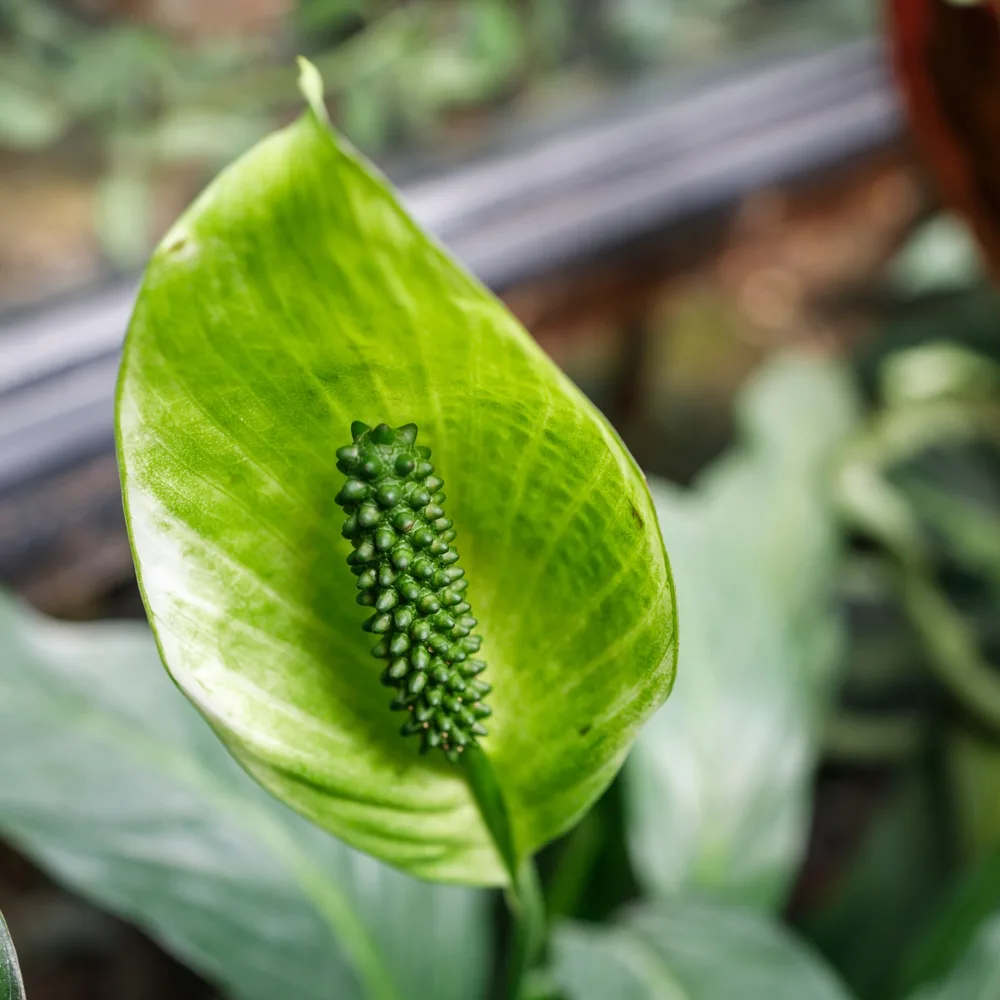
There is a fine balance needed in getting lighting right. Experimentation is required to find the best spot in your home for the plant.
Water
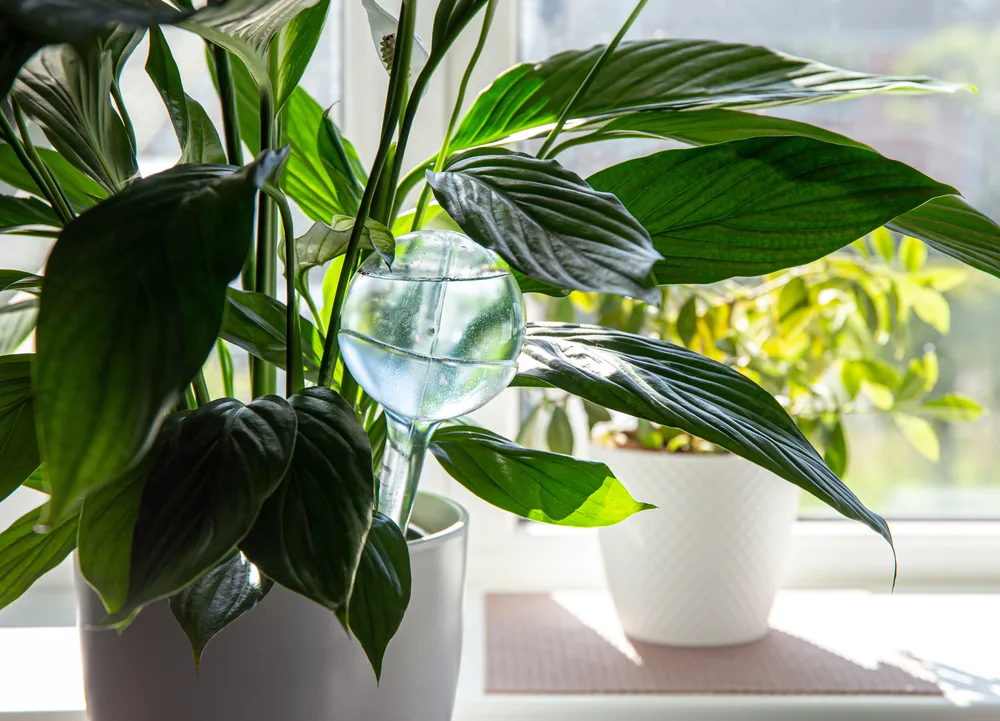
Peace lilies love moisture. They require watering two to three times a week, preferably with distilled water as they can be sensitive to some tap water chemicals and compounds. If distilled water is a stretch, even filtered water will do.
These plants will tell you when they need water by their drooping leaves. Some people use that as an indicator of when to water. But, that could be one of the main reasons your Peace lily isn’t flowering.
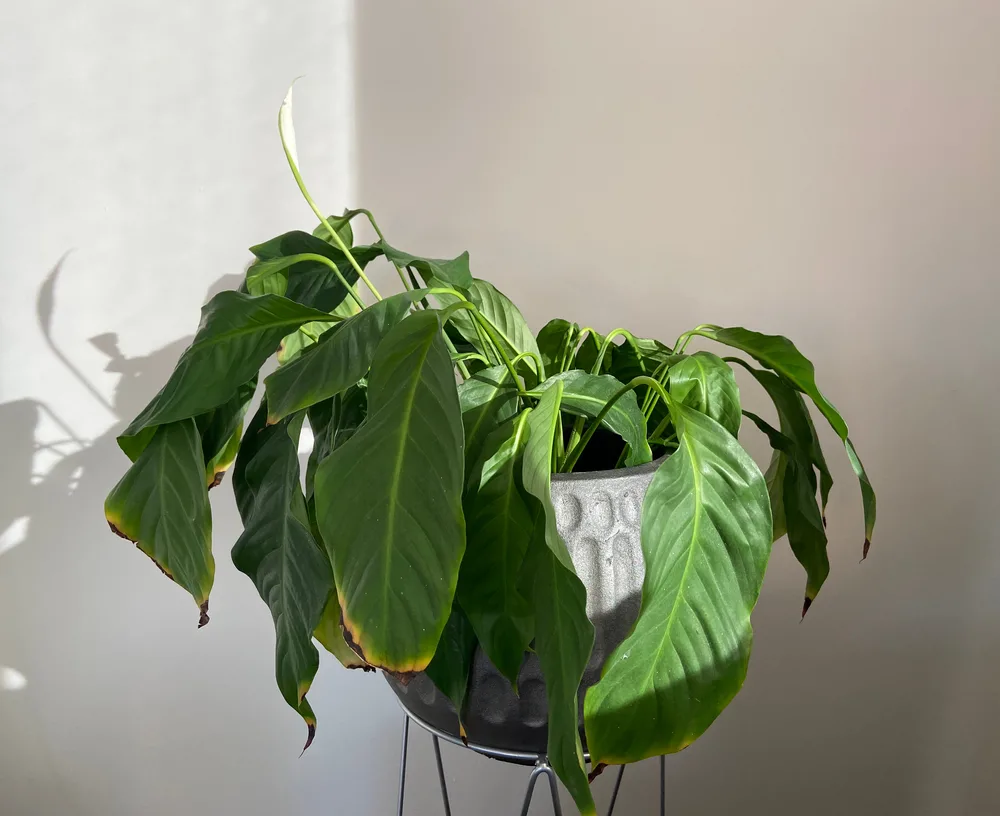
If the leaves are drooping or turning yellow or brown at the tips, the plant likely needed water a few days prior. These signs are the result of stress, and a stressed plant is unlikely to produce many flowers.
Peace lily leaves turning yellow are one of the most common peace lily problems. There are lots of reasons why peace lily leaves turn yellow and we talk about seven possible reasons in our article here.
Don’t let the soil dry out between watering, but don’t waterlog them either.
If you see blackened stems, it may be a sign that they are being overwatered. This could be due to watering too soon, lack of drainage, or leaving the pot sitting in trays full of water.
Maturity
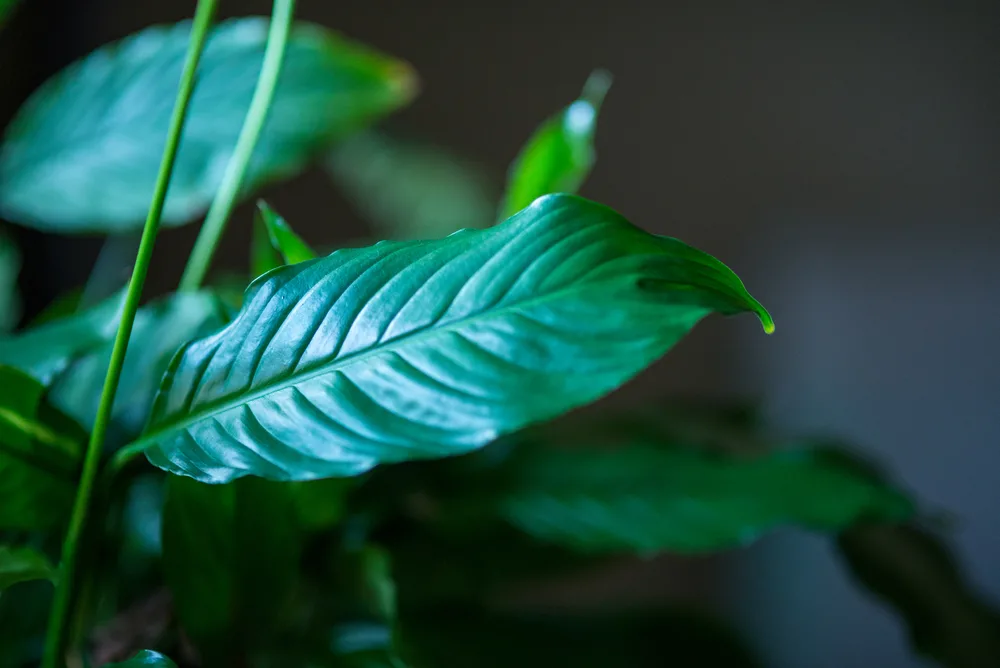
Young Peace Lilies do not flower until they are at least a year old. To speed up the process, commercial growers feed young plants with plant hormones to make them flower early.
If this is the case, you may take your beautifully flowering plant home and care for it correctly, only to find it stops flowering. The flowers will last a month or longer, but after that, you may battle to get more.
Give your Peace lily a bit more time to mature and it should begin producing flowers again. In the meantime, you can enjoy their wonderful deep green glossy foliage.
Flowering Season

Like age, flowering time is also largely out of your control and a common reason for Peace lilies not to flower.
Peace lilies flower naturally in spring and early summer. Their flowers can last over a month, extending into the colder seasons. They can also flower once more in autumn in some cases.
If you don’t see any flowers popping up in winter during the colder months, that is just a part of the plant’s natural life cycle. You will likely see them again when spring comes.
Feeding
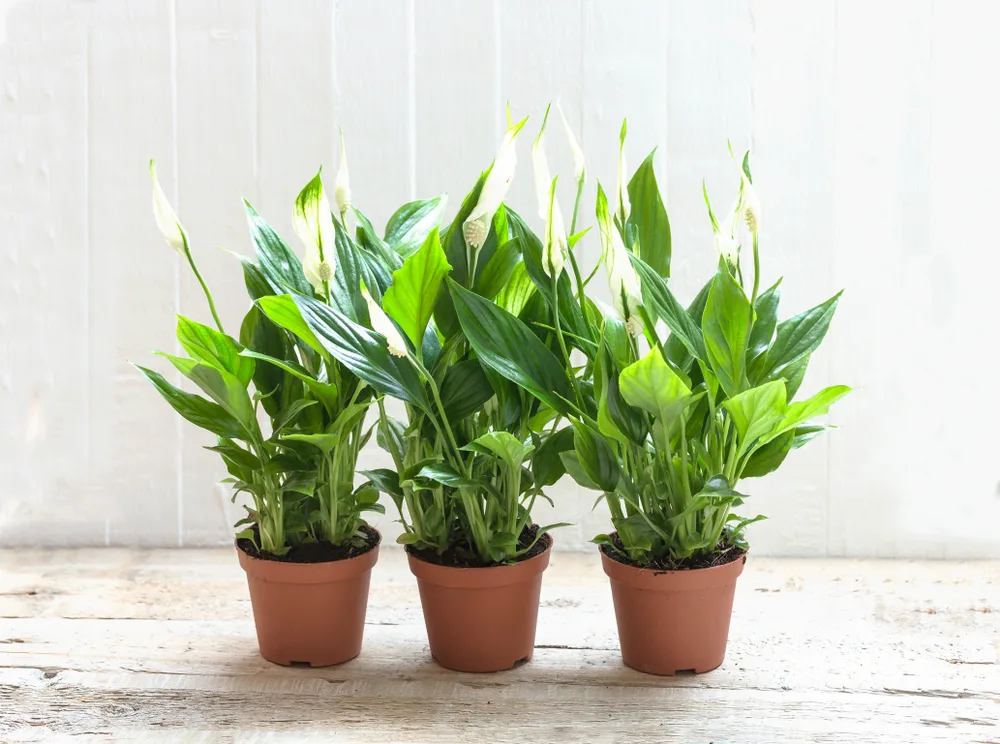
Nutrients are essential components in plant health, particularly if you want to encourage your plants to flower. Recently purchased Peace lilies won’t require feeding, but if they’ve been in the same pot for a while and have used up all the available nutrients, fertilizer or repotting is the only way to perk them up again.
Use a balanced houseplant fertilizer and feed them at least once every two months. If you find more green flowers appearing, reduce the feeding to every three months, or reduce the strength of the plant food by half.
This may not help with the current season, but you should see an improvement the following flowering season.
Weak flowers are also a sign that there may be a nutrient deficiency. If the flowers are not well-formed, switch to a fertilizer high in phosphorus. This nutrient encourages flowering and fruiting in plants and should spur flowering in your Peace lily too.
No Stress
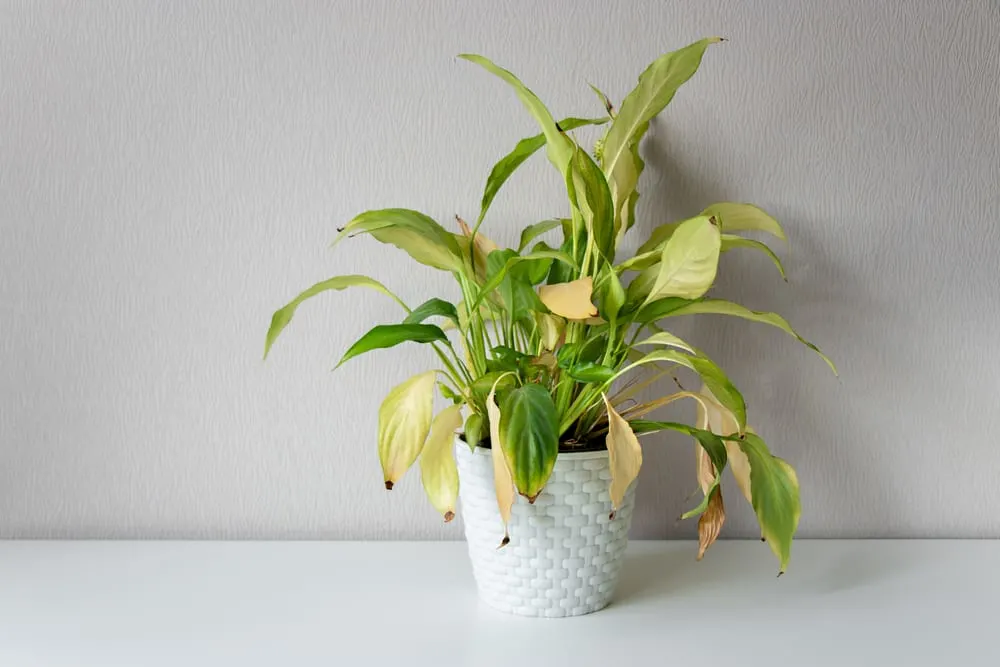
Wilting leaves or yellowing leaves are signs that a Peace Lily is under stress and will do anything to conserve energy – flowering not being one of them.
These plants are easy to care for and do with a bit of neglect, but if you want them to perform at their best, follow the rules above for a better prospect of healthy plants that flower regularly.
Maintenance
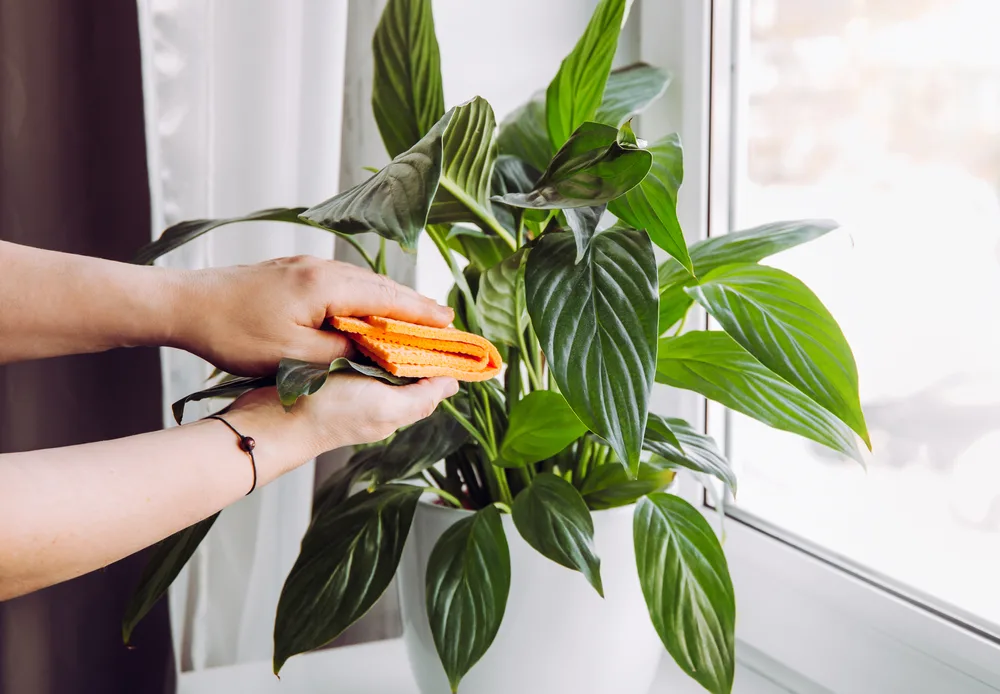
There are a few extra things to make sure this plant is at its height of health.
Clean the dust off the leaves regularly using a damp cloth. This will improve photosynthesis and gas exchange.
Stressed plants will often attract pests and diseases. In the case of Peace Lilies, scale and mealybugs are the ones to look out for.
Get rid of these if they appear as soon as you see them. For low-level infections, wipe down the leaves with soapy water or insecticidal soap and repeat this several times to stop the pests totally.
Even with the best care and attention, there is no guarantee that a Peace Lily outside its natural forest conditions will re-flower. But, following these steps will greatly increase your chances.
And, if they don’t flower again, you can always enjoy their shiny leaves and low-maintenance nature year-round instead.
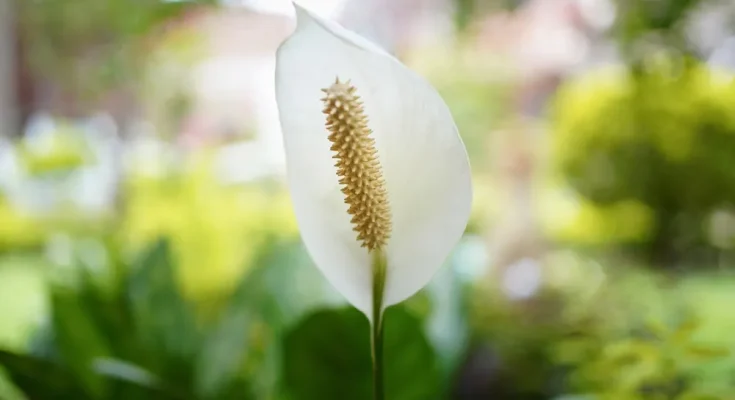



Thank you
You are welcome